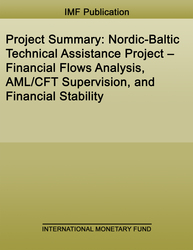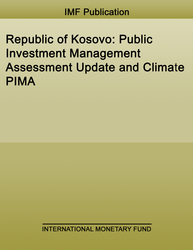
Project Summary:: Nordic-Baltic Technical Assistance Project – Financial Flows Analysis, AML/CFT Supervision, and Financial Stability
In their efforts to strengthen the effectiveness of Anti-Money Laundering/Countering the Financing of Terrorism Frameworks across the Nordic-Baltic Region (Denmark, Estonia, Finland, Iceland, Latvia, Lithuania, Norway, and Sweden), the Governors of the Nordic-Baltic Central Banks
READ MORE...
Volume/Issue:
Volume 2023
Issue 012
Publication date: September 2023
ISBN: 9798400253997
$5.00
Add to Cart by clicking price of the language and format you'd like to purchase
Available Languages and Formats
| English |
Prices in red indicate formats that are not yet available but are forthcoming.
Topics covered in this book
This title contains information about the following subjects.
Click on a subject if you would like to see other titles with the same subjects.
Money and Monetary Policy , International - Economics , Anti-Money Laundering , Combatting the Financing of Terrorism , Money Laundering Shocks , Financial Stability , Illicit Financial Flows , Machine Learning , and Risk-Based Supervision
Summary
This paper focuses on the summary of Nordic-Baltic Regional Technical Assistance Project Financial Flows Analysis, Anti-Money Laundering and combating the Financing of Terrorism (AML/CFT) Supervision, and Financial Stability. Various international banking scandals concerning AML/CFT breaches have taken place in the Nordic Baltic region, with far-reaching financial and reputational consequences. Financial integrity issues could potentially present risks to financial stability in the short and medium term. The depth of geographic ML/TF risk analysis and understanding differs among the Nordic-Baltic countries. There has been clear investment in ML/TF risk models across the region, but some gaps remain, notably, advanced data collection and analysis. Quantifying the financial stability impact of money laundering shocks is an understudied area. AML/CFT regimes in the region would benefit from better understanding of the ML threats associated with cross-border financial flows and nonresident activities. In order to address cross-border AML vulnerabilities, efforts to enhance the supervisory understanding of ML risks, strengthen the risk-based supervision of banks and crypto asset service providers, and deepen cooperation should continue.
Copyright © 2010 - 2025
Powered by:
AIDC



